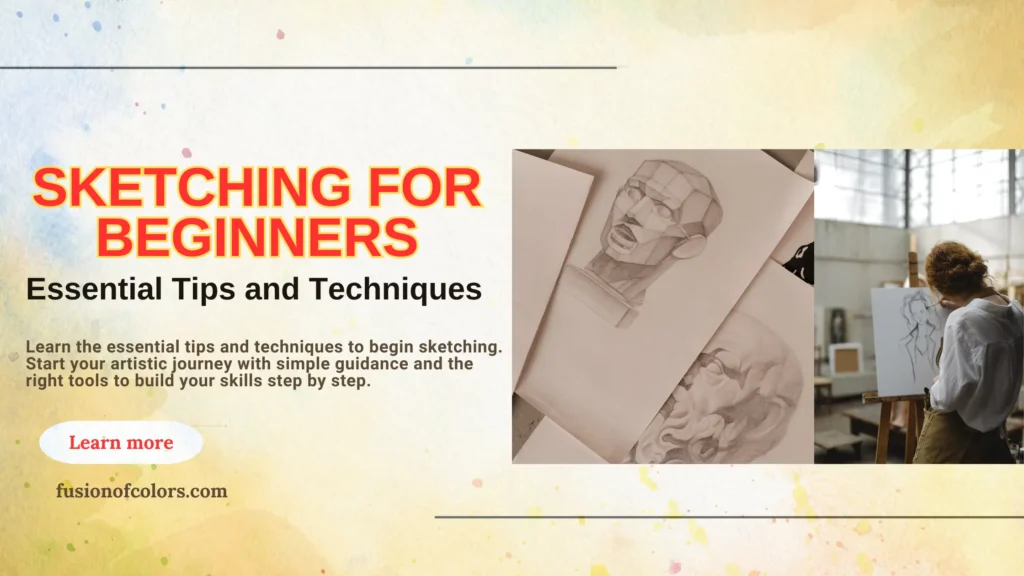
Introduction:
Sketching is an excellent way for beginners to dive into the world of drawing. It’s the foundation of many art forms and an exciting way to develop creativity. This guide on sketching for beginners will walk you through basic techniques, essential tools, and practical tips to kickstart your sketching journey.
What is Sketching?
Sketching is the art of creating quick, freehand drawings, typically focusing on capturing the essence or basic form of a subject. Beginners often use sketching as a way to develop observational skills and improve hand-eye coordination. It’s an essential part of learning how to draw.
Tools You Need for Sketching as a Beginner.
To get started with sketching for beginners, you don’t need a lot of expensive materials. Below is a list of essential tools:
| Tool | Description |
| Pencil Set | A variety of pencils from H (hard) to B (soft) |
| Sketchbook | Medium-texture paper for sketching practice |
| Eraser | A kneaded eraser works best for light corrections |
| Sharpener | A good-quality sharpener to maintain pencil sharpness |
| Blending Stump | To smooth out shading and create gradients |
Basic Sketching Techniques for Beginners

Gaining proficiency in a few fundamental methods might significantly improve your sketching for beginners journey:
1. Hatching: is the process of creating texture or shading with parallel lines.
2. Cross-hatching: For darker areas, draw intersecting parallel pairs of lines.
3. Stippling: Texture and shading are achieved by applying tiny dots.
4. Contour Drawing: Define an object’s form by drawing its contours.
5. Gesture Drawing: Quick, freehand drawings that capture motion or positions are called gesture drawings.
How to Improve Your Sketching Skills for beginners
Improving proficiency in sketching as a beginner takes commitment and perseverance. Here are some useful hints to improve your skills:
1. Practice Often: The secret is to be consistent.
2. Take Note of Your Environment: Draw scenes or items from real life to improve your observational abilities.
3. Try Different Instruments: Experiment with different textures, papers, and pencils.
4. Use References: Look at photos or videos for inspiration.
5. Get Feedback: Join online communities or share your work with friends for constructive criticism.

Common Mistakes to Avoid in Sketching
While sketching is fun, beginners often make a few mistakes. Avoid the following to improve your journey in sketching for beginners:
Pressing Too Hard: Light strokes are easier to correct and create more delicate lines.
Ignoring Proportions: Use guidelines to ensure proportions are accurate.
Overusing the Eraser: Instead of erasing constantly, try to work around mistakes and learn from them.
Rushing the Process: Sketching takes time; don’t rush through it.
FAQs
A good starting point is an HB pencil. It’s balanced for both shading and outlining, making it perfect for sketching for beginners.
A good goal is 15-30 minutes a day. Consistent practice helps build muscle memory and improve your technique.
Yes, but for beginners, it’s advisable to use references to improve observational skills.
Use a kneaded eraser for light corrections, and remember that small mistakes can often be incorporated into the drawing.
Sketching is usually a rough, quick drawing, while drawing can be more detailed and refined.
